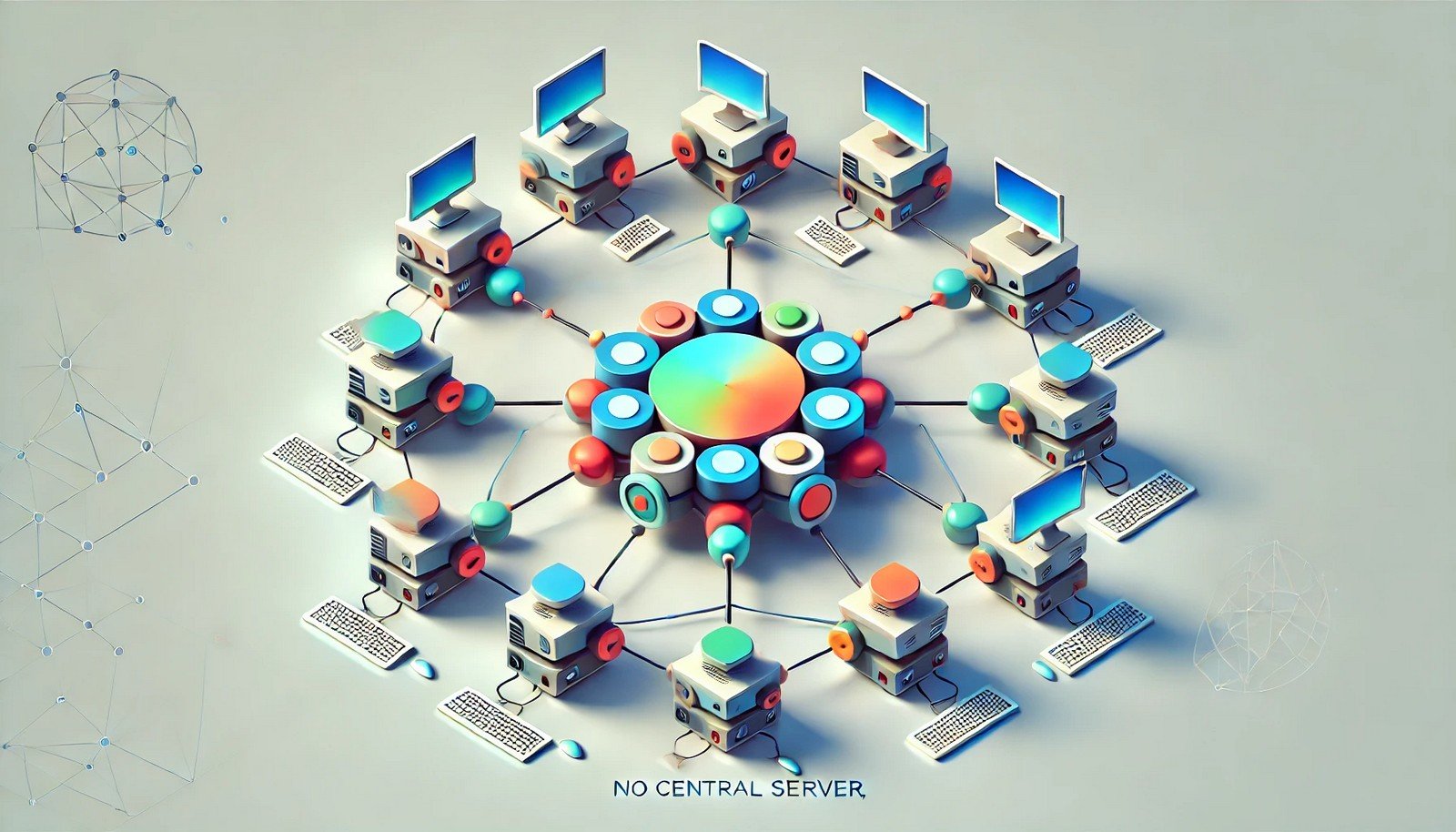Peer-to-Peer Network
 (Representational Image | Source: Dall-E)
(Representational Image | Source: Dall-E)
Quick Navigation:
- Peer-to-Peer Network Definition
- Peer-to-Peer Network Explained Easy
- Peer-to-Peer Network Origin
- Peer-to-Peer Network Etymology
- Peer-to-Peer Network Usage Trends
- Peer-to-Peer Network Usage
- Peer-to-Peer Network Examples in Context
- Peer-to-Peer Network FAQ
- Peer-to-Peer Network Related Words
Peer-to-Peer Network Definition
A Peer-to-Peer (P2P) network is a decentralized network architecture where participants (peers) share resources directly with each other without relying on a centralized server. Each peer can act as both a client and a server, making it a robust and efficient system for data exchange. Commonly used in file sharing, cryptocurrency, and gaming, P2P networks prioritize scalability and redundancy, enabling seamless resource sharing.
Peer-to-Peer Network Explained Easy
Imagine a group of friends sharing songs. Instead of sending them through one person (like a teacher), they share directly with each other. Peer-to-peer networks work like this: every computer in the network can give and take files without needing a boss computer.
Peer-to-Peer Network Origin
The concept emerged in the 1980s with early networking systems but became mainstream with the advent of file-sharing platforms like Napster in the late 1990s. It has since evolved, finding applications in diverse fields like blockchain and cloud computing.
Peer-to-Peer Network Etymology
The term "peer-to-peer" refers to participants in a network (peers) communicating and sharing resources directly with one another.
Peer-to-Peer Network Usage Trends
P2P networks gained immense popularity during the early 2000s with file-sharing applications. Today, they underpin technologies like cryptocurrencies, distributed ledgers, and decentralized apps (DApps). Industries are leveraging P2P for scalability, fault tolerance, and resource distribution in various applications.
Peer-to-Peer Network Usage
- Formal/Technical Tagging:
- Decentralized Computing
- Distributed Systems
- Resource Sharing - Typical Collocations:
- "P2P file sharing"
- "peer-to-peer blockchain"
- "decentralized applications"
- "P2P architecture"
Peer-to-Peer Network Examples in Context
- File-sharing platforms like BitTorrent enable users to download and share files in a P2P setup.
- Cryptocurrencies like Bitcoin rely on P2P networks to validate and process transactions without a central authority.
- Online gaming often uses P2P to ensure a seamless multiplayer experience by connecting players directly.
Peer-to-Peer Network FAQ
- What is a peer-to-peer network?
A decentralized network where participants share resources directly without a central server. - How does a P2P network differ from client-server models?
In P2P, all nodes are equal and can act as servers or clients, unlike client-server setups with distinct roles. - What are common applications of P2P networks?
File sharing, cryptocurrencies, gaming, and distributed computing. - Are P2P networks secure?
Security depends on the implementation, as P2P networks can be vulnerable to certain types of attacks. - How do P2P networks support cryptocurrencies?
They facilitate decentralized transaction processing and ledger maintenance. - Can P2P networks scale efficiently?
Yes, they often scale better than centralized systems by adding more peers. - Why are P2P networks important for blockchain?
They enable decentralized ledger sharing and transaction validation. - What challenges do P2P networks face?
Bandwidth, security issues, and ensuring fairness in resource sharing. - Are P2P networks energy efficient?
They can be, but energy usage varies with the application. - Is P2P used in cloud computing?
Yes, for distributed storage and computing tasks.
Peer-to-Peer Network Related Words
- Categories/Topics:
- Distributed Systems
- Blockchain
- Decentralized Computing
Did you know?
Napster, one of the first popular P2P file-sharing services, disrupted the music industry by allowing users to share MP3 files freely. Its success paved the way for other P2P technologies and remains a pivotal moment in digital history.
PicDictionary.com is an online dictionary in pictures. If you have questions or suggestions, please reach out to us on WhatsApp or Twitter.Authors | Arjun Vishnu | @ArjunAndVishnu

I am Vishnu. I like AI, Linux, Single Board Computers, and Cloud Computing. I create the web & video content, and I also write for popular websites.
My younger brother, Arjun handles image & video editing. Together, we run a YouTube Channel that's focused on reviewing gadgets and explaining technology.



Comments powered by CComment